Characteristics of Spatial and Temporal Variation in Drought in the Sichuan Basin from 1963 to 2022
Abstract
:1. Introduction
2. Data and Methods
2.1. Overview of the Research Area and Data Sources
2.2. Research Methods
2.2.1. Standardized Precipitation Evapotranspiration Index
2.2.2. Wavelet Analysis
2.2.3. Run-Length Theory
3. Results and Analysis
3.1. Trend Analysis of SPEI Change in the Sichuan Basin
3.1.1. Drought Evolution Law at Different Time Scales
3.1.2. SPEI Change Analysis at Seasonal Scale
3.2. SPEI Periodic Change Analysis in the Sichuan Basin
3.2.1. Interannual SPEI Cycle Change
3.2.2. SPEI Periodic Change at Seasonal Scale
3.3. Spatiotemporal Variation in the Number of Drought Events in the Sichuan Basin
3.3.1. Analysis of the Change in Drought Times
3.3.2. Change in Drought Times at the Seasonal Scale
3.4. Analysis of the Temporal and Duration Changes in Drought in the Sichuan Basin
3.4.1. Spatiotemporal Analysis of Annual Drought
3.4.2. Analysis of Seasonal Drought Duration
3.5. Analysis of Drought Severity Change in the Sichuan Basin
3.5.1. Analysis of the Change in Drought Severity and Intensity
3.5.2. Spatial Variation Analysis of Drought Severity and Drought Intensity in Each Season
3.6. Analysis and Temporal Change in Drought Peaks in the Sichuan Basin
3.6.1. Interannual Change in Drought Peaks
3.6.2. Analysis of Variation in Peak Drought in Four Seasons
4. Discussion
5. Conclusions
- (1)
- Between 1963 and 2022, the SPEI drought index for the Sichuan Basin fluctuated between −1.5 and 1, with a linear trend rate of −0.02 per decade. However, this downward trend was not statistically significant. The SPEI generally decreased in the Sichuan Basin, except during summer, with a notable downward trend observed in autumn (p < 0.05). Over the past 60 years, the seasonal SPEI in the Sichuan Basin has shown distinct cycles: a primary 6-year cycle in spring, autumn, and winter, and an 8-year cycle in summer.
- (2)
- The study area exhibited significant spatial variations in drought frequency, duration, severity, and peak intensity. The eastern and southern regions of the basin experience droughts more frequently than the western areas. Seasonal changes show that the high-frequency drought areas shift gradually from east–north–northwest–west to south. Drought duration is generally longer in the western and northern sections compared to the eastern regions, with variations in drought intensity levels. Typically, light droughts have the shortest duration, while severe droughts last the longest.
- (3)
- Extreme drought severity is predominantly concentrated in the Chengdu Plain and the Central Sichuan Hilly Region. Despite this, the drought intensity index is lowest in the Chengdu Plain and most parts of eastern Sichuan, registering at −1.19, suggesting that these areas experience medium-grade droughts on average. Seasonally, both light and severe droughts are widespread throughout the Sichuan Basin.
- (4)
- The lowest average peak value of drought events, recorded at −1.70, is found in the eastern and western regions of the basin. This indicates that, over the past 60 years, extreme drought conditions in the study area may have expanded.
Author Contributions
Funding
Institutional Review Board Statement
Informed Consent Statement
Data Availability Statement
Acknowledgments
Conflicts of Interest
References
- Hoque, M.A.A.; Pradhan, B.; Ahmed, N.; Sohel, M.S.I. Agricultural drought risk assessment of Northern New South Wales, Australia using geospatial techniques. Sci. Total Environ. 2021, 756, 143600. [Google Scholar] [CrossRef] [PubMed]
- Zhang, Q.; Yao, Y.B.; Wang, Y.; Wang, S.P.; Wang, J.S.; Yang, J.H.; Wang, J.; Li, Y.P.; Shang, J.L.; Li, W.J. Characteristics of drought in Southern China under climatic warming, the risk, and countermeasures for prevention and control. Theor. Appl. Climatol. 2019, 136, 1157–1173. [Google Scholar] [CrossRef]
- Su, B.D.; Huang, J.L.; Fischer, T.; Wang, Y.J.; Kundzewicz, Z.W.; Zhai, J.Q.; Sun, H.M.; Wang, A.Q.; Zeng, X.F.; Wang, G.J.; et al. Drought losses in China might double between the 1.5 °C and 2.0 °C warming. Proc. Natl. Acad. Sci. USA 2018, 115, 10600–10605. [Google Scholar] [CrossRef]
- Zhang, Q.; Yao, Y.B.; Li, Y.H.; Huang, J.P.; Ma, Z.G.; Wang, Z.L.; Wang, S.P.; Wang, Y.; Zhang, Y. Progress and prospect on the study of causes and variation regularity of droughts in China. Acta Meteorol. Sin. 2020, 78, 500–521. [Google Scholar] [CrossRef]
- Lesk, C.; Rowhani, P.; Ramankutty, N. Influence of extreme weather disasters on global crop production. Nature 2016, 529, 84. [Google Scholar] [CrossRef]
- Alahacoon, N.; Edirisinghe, M. A comprehensive assessment of remote sensing and traditional based drought monitoring indices at global and regional scale. Geomat. Nat. Hazards Risk 2022, 13, 762–799. [Google Scholar] [CrossRef]
- Guillory, L.; Pudmenzky, C.; Nguyen-Huy, T.; Cobon, D.; Stone, R. A drought monitor for Australia. Environ. Model. Softw. 2023, 170. [Google Scholar] [CrossRef]
- Kulkarni, S.S.; Wardlow, B.D.; Bayissa, Y.A.; Tadesse, T.; Svoboda, M.D.; Gedam, S.S. Developing a Remote Sensing-Based Combined Drought Indicator Approach for Agricultural Drought Monitoring over Marathwada, India. Remote Sens. 2020, 12, 2091. [Google Scholar] [CrossRef]
- Liu, T.T.; Krop, R.; Haigh, T.; Smith, K.H.; Svoboda, M. Valuation of Drought Information: Understanding the Value of the US Drought Monitor in Land Management. Water 2021, 13, 112. [Google Scholar] [CrossRef]
- Shah, D.; Mishra, V. Integrated Drought Index (IDI) for Drought Monitoring and Assessment in India. Water Resour. Res. 2020, 56, e2019WR026284. [Google Scholar] [CrossRef]
- Zhang, Y.T.; Hao, Z.C.; Jiang, Y.T.; Singh, V.P. Impact-based evaluation of multivariate drought indicators for drought monitoring in China. Glob. Planet. Chang. 2023, 228, 104219. [Google Scholar] [CrossRef]
- McKee, T.B.; Doesken, N.J.; Kleist, J. The relationship of drought frequency and duration to time scales. In Proceedings of the 8th Conference on Applied Climatology, Anaheim, CA, USA, 17–22 January 1993; pp. 179–183. [Google Scholar]
- Vicente-Serrano, S.M.; Beguería, S.; López-Moreno, J.I. A Multiscalar Drought Index Sensitive to Global Warming: The Standardized Precipitation Evapotranspiration Index. J. Clim. 2010, 23, 1696–1718. [Google Scholar] [CrossRef]
- Botai, C.M.; Botai, J.O.; Dlamini, L.C.; Zwane, N.S.; Phaduli, E. Characteristics of Droughts in South Africa: A Case Study of Free State and North West Provinces. Water 2016, 8, 439. [Google Scholar] [CrossRef]
- Ogunjo, S.; Ife-Adediran, O.; Owoola, E.; Fuwape, I. Quantification of historical drought conditions over different climatic zones of Nigeria. Acta Geophys. 2019, 67, 879–889. [Google Scholar] [CrossRef]
- Peres, D.J.; Bonaccorso, B.; Palazzolo, N.; Cancelliere, A.; Mendicino, G.; Senatore, A. A dynamic approach for assessing climate change impacts on drought: An analysis in Southern Italy. Hydrol. Sci. J. 2023, 68, 1213–1228. [Google Scholar] [CrossRef]
- Spinoni, J.; Naumann, G.; Vogt, J.; Barbosa, P. European drought climatologies and trends based on a multi-indicator approach. Glob. Planet. Chang. 2015, 127, 50–57. [Google Scholar] [CrossRef]
- Ionita, M.; Nagavciuc, V. Changes in drought features at the European level over the last 120 years. Nat. Hazards Earth Syst. Sci. 2021, 21, 1685–1701. [Google Scholar] [CrossRef]
- Oertel, M.; Javier Meza, F.; Gironas, J.; Scott, C.A.; Rojas, F.; Pineda-Pablos, N. Drought Propagation in Semi-Arid River Basins in Latin America: Lessons from Mexico to the Southern Cone. Water 2018, 10, 1564. [Google Scholar] [CrossRef]
- Quesada-Montano, B.; Wetterhall, F.; Westerberg, I.K.; Hidalgo, H.G.; Halldin, S. Characterising droughts in Central America with uncertain hydro-meteorological data. Theor. Appl. Climatol. 2019, 137, 2125–2138. [Google Scholar] [CrossRef]
- Vicente-Serrano, S.M.; Chura, O.; Lopez-Moreno, J.I.; Azorin-Molina, C.; Sanchez-Lorenzo, A.; Aguilar, E.; Moran-Tejeda, E.; Trujillo, F.; Martinez, R.; Nieto, J.J. Spatio-temporal variability of droughts in Bolivia: 1955–2012. Int. J. Climatol. 2015, 35, 3024–3040. [Google Scholar] [CrossRef]
- Zeng, Z.; Wu, W.; Li, Z.; Zhou, Y.; Guo, Y.; Huang, H. Agricultural Drought Risk Assessment in Southwest China. Water 2019, 11, 1064. [Google Scholar] [CrossRef]
- Cao, B.; Zhang, B.; Ma, B.; Tang, M.; Wang, G.Q.; Wu, Q.H.; Jia, Y.Q. Spatial and temporal characteristics analysis of drought based on SPEI in the Middle and Lower Yangtze Basin. Acta Ecol. Sin. 2018, 38, 6258–6267. [Google Scholar]
- Li, S.; Zeng, L.; Zhang, C.J.; Xiao, Q.; Zhang, Q.; Gong, W.T. Spatio-temporal variations and propagation from meteoro-logical to hydrological drought in the upper Yangtze River basin over last 120 years. Clim. Chang. Res. 2023, 19, 263–277. [Google Scholar]
- Liu, Y.; Tian, J.Y.; Huang, T.T.; Jia, Z.F.; Guan, R.L.; Ma, X.Y. Analysis of NDVI changes and driving factors in the Yangtze River Basin. Sci. Geogr. Sin. 2023, 43, 1022–1031. [Google Scholar] [CrossRef]
- Wang, D.; Zhang, B.; An, M.L.; Zhang, T.F.; Ji, D.M.; Ren, P.G. Temporal and Spatial Distributions of Drought in Southwest China over the Past 53 years Based on Standardized Precipitation Evapotranspiration Index. J. Nat. Resour. 2014, 29, 1003–1016. [Google Scholar]
- Tan, H.Z.; Lu, X.N.; Yang, S.Q.; Wang, Y.Q.; Li, F.; Liu, J.B.; Chen, J.; Huang, Y. Drought risk assessment in the coupled spatial-temporal dimension of the Sichuan Basin, China. Nat. Hazards 2022, 114, 3205–3233. [Google Scholar] [CrossRef]
- Xu, C.C.; Wu, W.X.; Ge, Q.S.; Zhou, Y.; Lin, Y.M.; Li, Y.M. Simulating climate change impacts and potential adaptations on rice yields in the Sichuan Basin, China. Mitig. Adapt. Strateg. Glob. Chang. 2017, 22, 565–594. [Google Scholar] [CrossRef]
- He, J.Y.; Zhang, M.J.; Wang, P.; Wang, S.J.; Wang, X.M. Climate Characteristics of the Extreme Drought Events in Southwest China during Recent 50 Years. Acta Geogr. Sin. 2011, 66, 1179–1190. [Google Scholar]
- Li, Y.H.; Xu, H.M.; Gao, Y.H.; Li, Q.; Bai, Y.Y.; He, Z.N. Characteristics of Outgoing Longwave Radiation Related to Typical Flood and Drought Years over the East of Southwest China in Summer. Plateau Meteorol. 2009, 28, 861–869. [Google Scholar]
- Yin, H.; Li, Y.H. Summary of Advance on Drought Study in Southwest China. J. Arid Meteorol. 2013, 31, 182–193. [Google Scholar]
- Zhang, Y.; Xia, J.; Yang, F.; She, D.X.; Zou, L.; Hong, S.; Wang, Q.; Yuan, F.; Song, L.X. Analysis of Drought Characteristic of Sichuan Province, Southwestern China. Water 2023, 15, 1601. [Google Scholar] [CrossRef]
- Gao, H.J.; Guo, M.H.; Liu, J.Y.; Liu, T.J.; He, S.J. Power Supply Challenges and Prospects in New Power System from Sichuan Electricity Curtailment Events Caused by High-temperature Drought Weather. Proc. CSEE 2023, 43, 4517–4538. [Google Scholar] [CrossRef]
- Wang, M.T. Trends and Response Measures of Agricultural Seasonal Drought under Climate Change in Sichuan. Ph.D. Thesis, Sichuan Agricultural University, Chengdu, China, 2012. [Google Scholar]
- Xia, J.; Chen, J.; She, D.X. Impacts and countermeasures of extreme drought in the Yangtze River Basin in 2022. J. Hydraul. Eng. 2022, 53, 1143–1153. [Google Scholar] [CrossRef]
- Xu, J.J.; Yuan, Z. Drought Characteristics of Changjiang River Basin in 2022 and Drought Mitigation Response Pattern under New Circumstances. J. Chang. River Sci. Res. Inst. 2023, 40, 1–8. [Google Scholar]
- Huang, Y.H.; Xu, C.; Yang, H.J.; Wang, J.H.; Jiang, D.; Zhao, C.P. Temporal and Spatial Variability of Droughts in Southwest China from 1961 to 2012. Sustainability 2015, 7, 13597–13609. [Google Scholar] [CrossRef]
- Liu, C.H.; Yang, C.P.; Yang, Q.; Wang, J. Spatiotemporal drought analysis by the standardized precipitation index (SPI) and SPEI in Sichuan Province, China. Sci. Rep. 2021, 11, 1280. [Google Scholar] [CrossRef]
- Chen, Y.X.; Yang, J.J.; Xu, Y.Y.; Zhang, W.L.; Wang, Y.X.; Wei, J.X.; Cheng, W.X. Remote-Sensing Drought Monitoring in Sichuan Province from 2001 to 2020 Based on MODIS Data. Atmosphere 2022, 13, 1970. [Google Scholar] [CrossRef]
- Li, C.B.; Adu, B.; Li, H.H.; Yang, D.H. Spatial and temporal variations of drought in Sichuan Province from 2001 to 2020 based on modified temperature vegetation dryness index (TVDI). Ecol. Indic. 2022, 141, 108883. [Google Scholar] [CrossRef]
- Yu, X.; Li, C.; Huo, T.; Ji, Z. Information diffusion theory-based approach for the risk assessment of meteorological disasters in the Yangtze River Basin. Nat. Hazards 2020, 107, 2337–2362. [Google Scholar] [CrossRef]
- Wang, X.L.; Wen, Q.H.; Wu, Y. Penalized Maximal t Test for Detecting Undocumented Mean Change in Climate Data Series. J. Appl. Meteorol. Climatol. 2007, 46, 916–931. [Google Scholar] [CrossRef]
- Begueria, S.; Vicente-Serrano, S.M.; Reig, F.; Latorre, B. SPEI revisited: Parameter fitting, evapotranspiration models, tools, datasets and drought monitoring. Int. J. Climatol. 2014, 34, 3001–3023. [Google Scholar] [CrossRef]
- GB/T 20481-2017; Grades of Meteorological Drought. China Meteorological Administration: Beijing, China, 2017.
- Zhang, Y.Q.; Xiang, Y.; Chen, C.C.; Wei, R.C. Research on spatial-temporal variation of drought and flood events over Ganjiang basin. J. Meteorol. Sci. 2015, 35, 346–352. [Google Scholar]
- Montaseri, M.; Amirataee, B. Comprehensive stochastic assessment of meteorological drought indices. Int. J. Climatol. 2017, 37, 998–1013. [Google Scholar] [CrossRef]
- Wang, F.; Wang, Z.; Yang, H.; Di, D.; Zhao, Y.; Liang, Q.; Hussain, Z. Comprehensive evaluation of hydrological drought and its relationships with meteorological drought in the Yellow River basin, China. J. Hydrol. 2020, 584, 124751. [Google Scholar] [CrossRef]
- Yao, N.; Li, L.; Feng, P.; Feng, H.; Liu, D.L.; Liu, Y.; Jiang, K.; Hu, X.; Li, Y. Projections of drought characteristics in China based on a standardized precipitation and evapotranspiration index and multiple GCMs. Sci. Total Environ. 2020, 704, 135245. [Google Scholar] [CrossRef]
- Wang, Y.G.; Lan, L.; Lei, S.; Wang, X.X.; Wang, X.K. Study on spatial-and-temporal characteristics of typical drought events in Sichuan Province. China Flood Drought Manag. 2023, 33, 22–26. [Google Scholar] [CrossRef]
- Zhang, H.; Zhang, X.L.; Li, J.J.; Wang, M.T.; Ma, Z.L. SPEI-based analysis of temporal and spatial variation characteristicsfor seasonal drought in Sichuan Basin. Agric. Res. Arid Areas 2018, 36, 242–250+256. [Google Scholar]
- Cui, Y.Q.; Zhang, B.; Huang, H.; Zeng, J.J.; Wang, X.D.; Jiao, W.H. Spatiotemporal Characteristics of Drought in the North China Plain over the Past 58 Years. Atmosphere 2021, 12, 844. [Google Scholar] [CrossRef]
- Song, G.Y.; Zhou, C.B.; Fu, S.J. Analysis of drought characteristics and construction of prediction model in Chongqing based on SPEI index. Eng. J. Wuhan Univ. 2023, 56, 1458–1471. [Google Scholar] [CrossRef]
- Liao, G.M.; Yan, J.P.; Hu, N.N.; Liu, Y. Analysis on temporal series of precipitation and drought-flood about the recent 50 years in the east of Sichuan Basin. Resour. Environ. Yangtze Basin 2012, 21, 1160–1166. [Google Scholar]
- Wang, Z.; Liang, C.; Long, Y.D.; Zhan, C. Temporal and spatial distribution characteristics of drought in hilly region of central Sichuan based on SPEI. Yangtze River 2015, 46, 12–15+23. [Google Scholar] [CrossRef]
- Zhang, J.; Shen, Y. Spatio-temporal variations in extreme drought in China during 1961–2015. J. Geogr. Sci. 2019, 29, 67–83. [Google Scholar] [CrossRef]
- Sarwar, A.N.; Waseem, M.; Azam, M.; Abbas, A.; Ahmad, I.; Lee, J.E.; Haq, F.U. Shifting of Meteorological to Hydrological Drought Risk at Regional Scale. Appl. Sci. 2022, 12, 5560. [Google Scholar] [CrossRef]
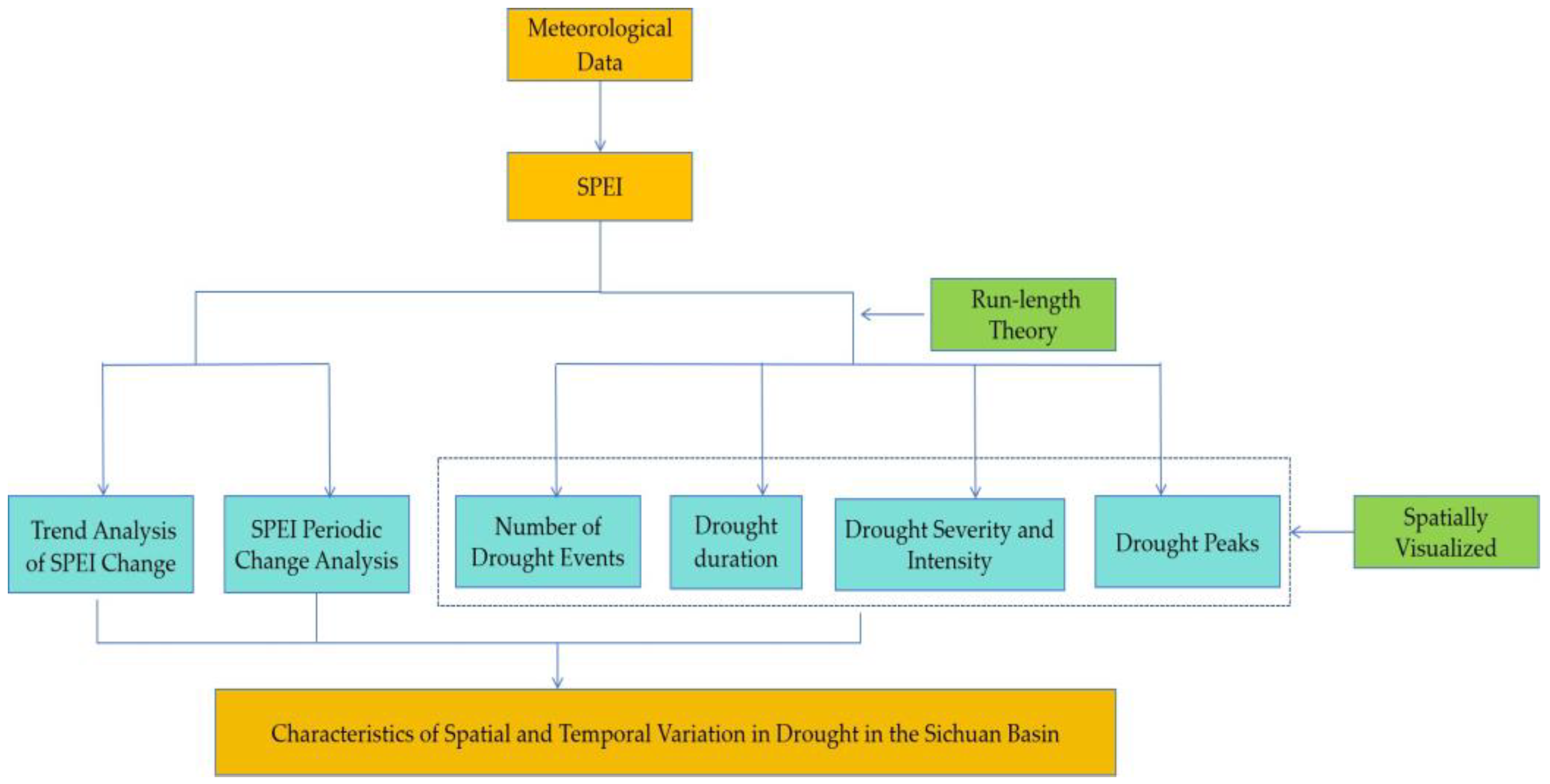
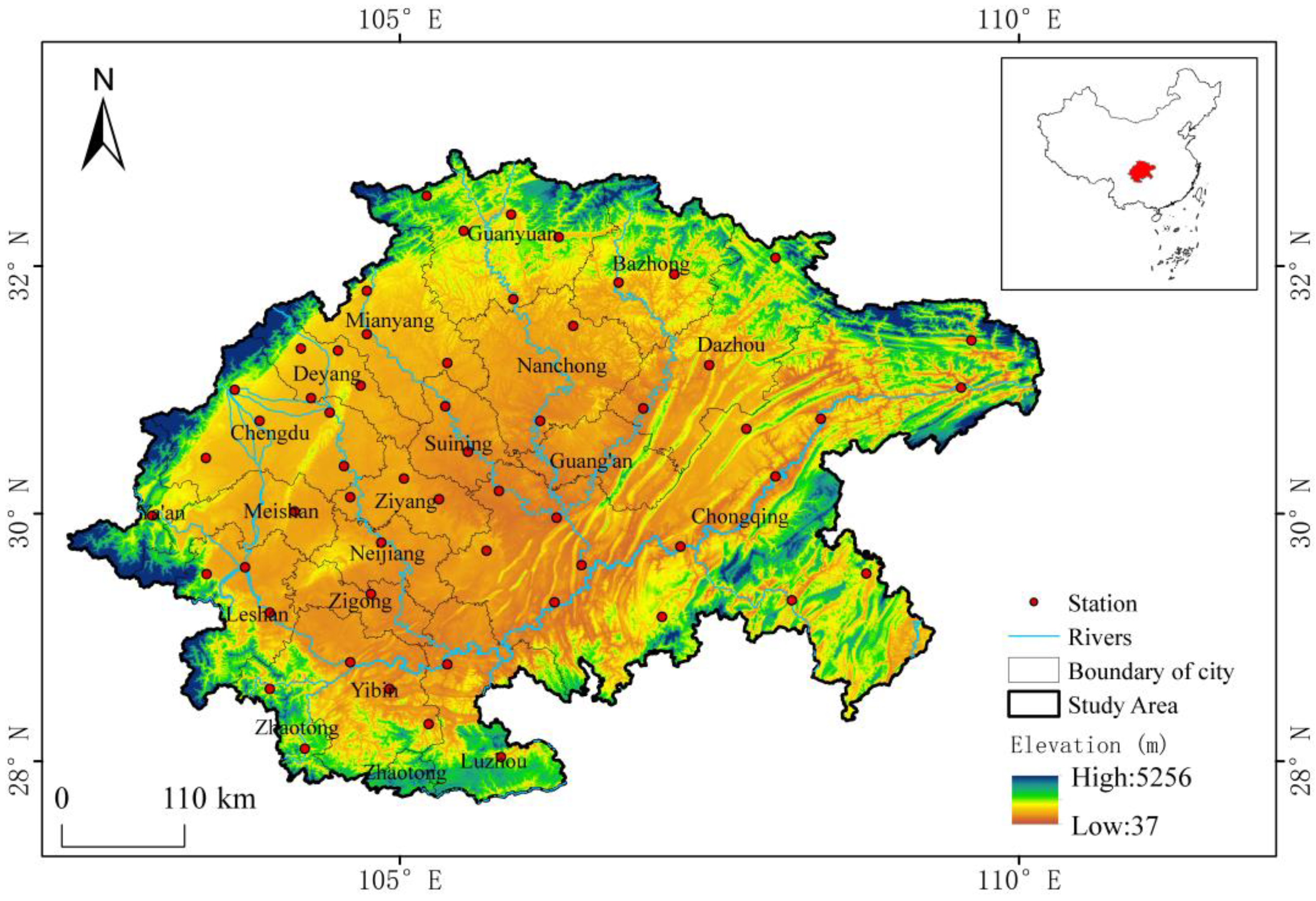
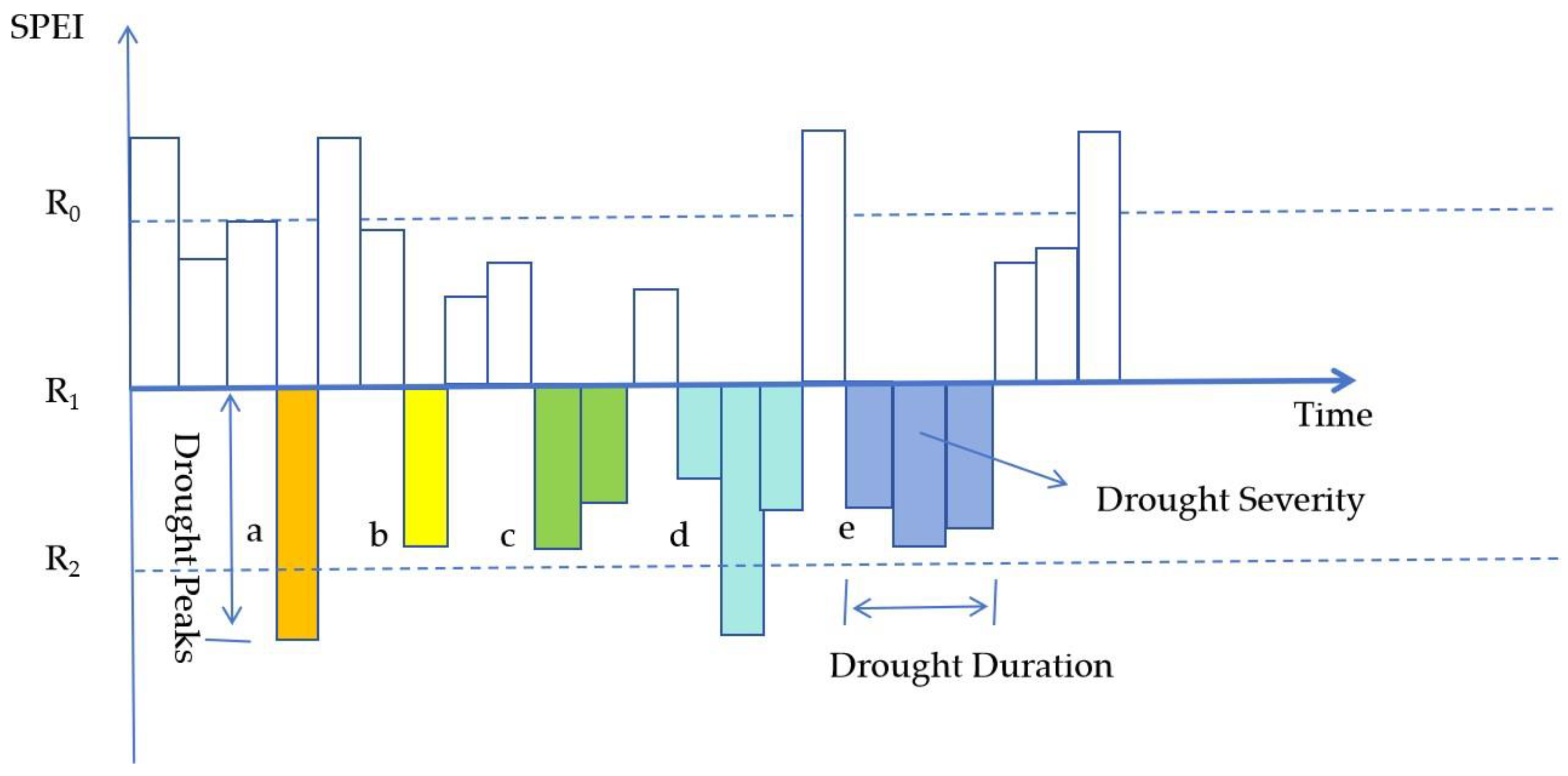

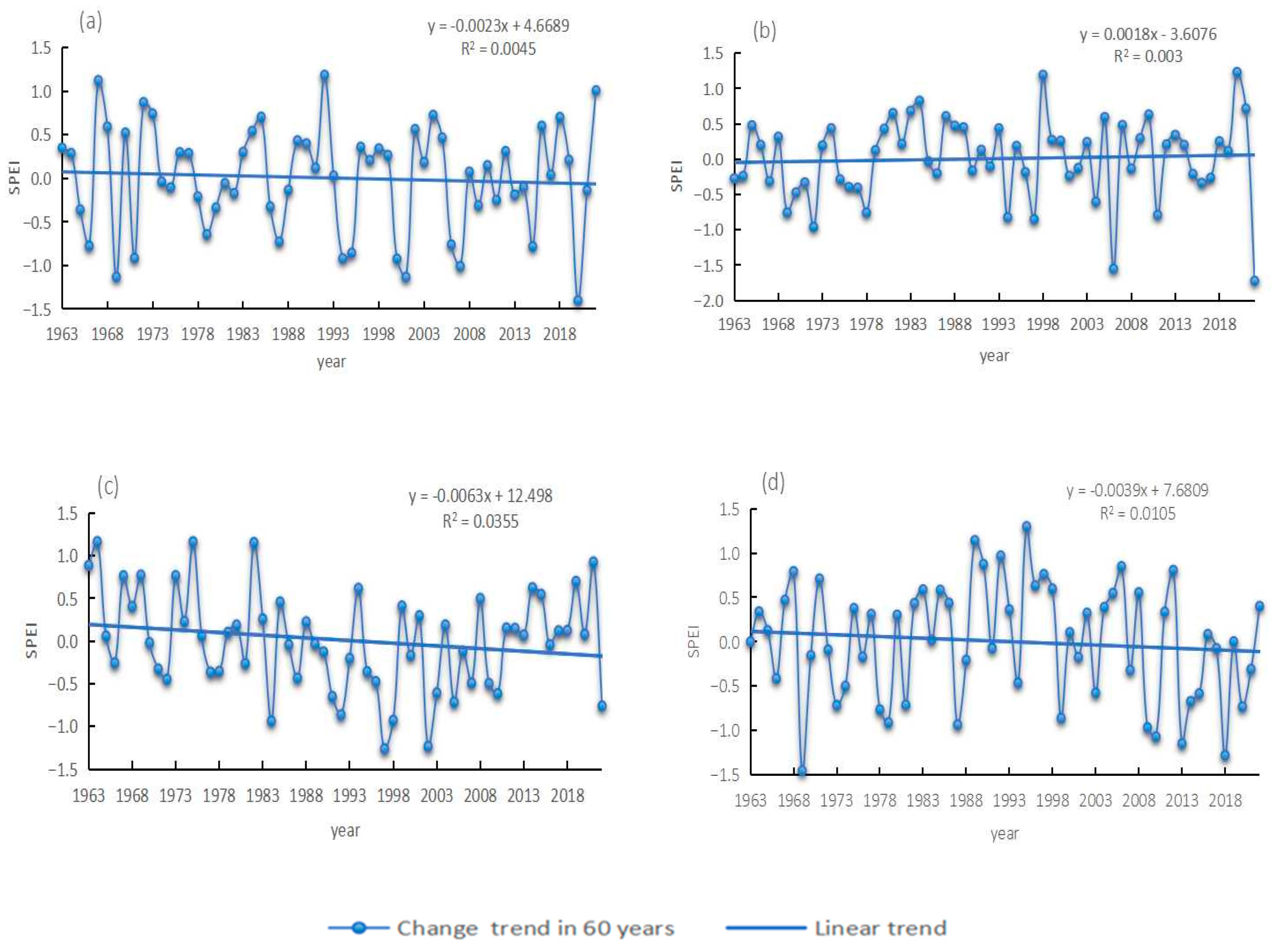
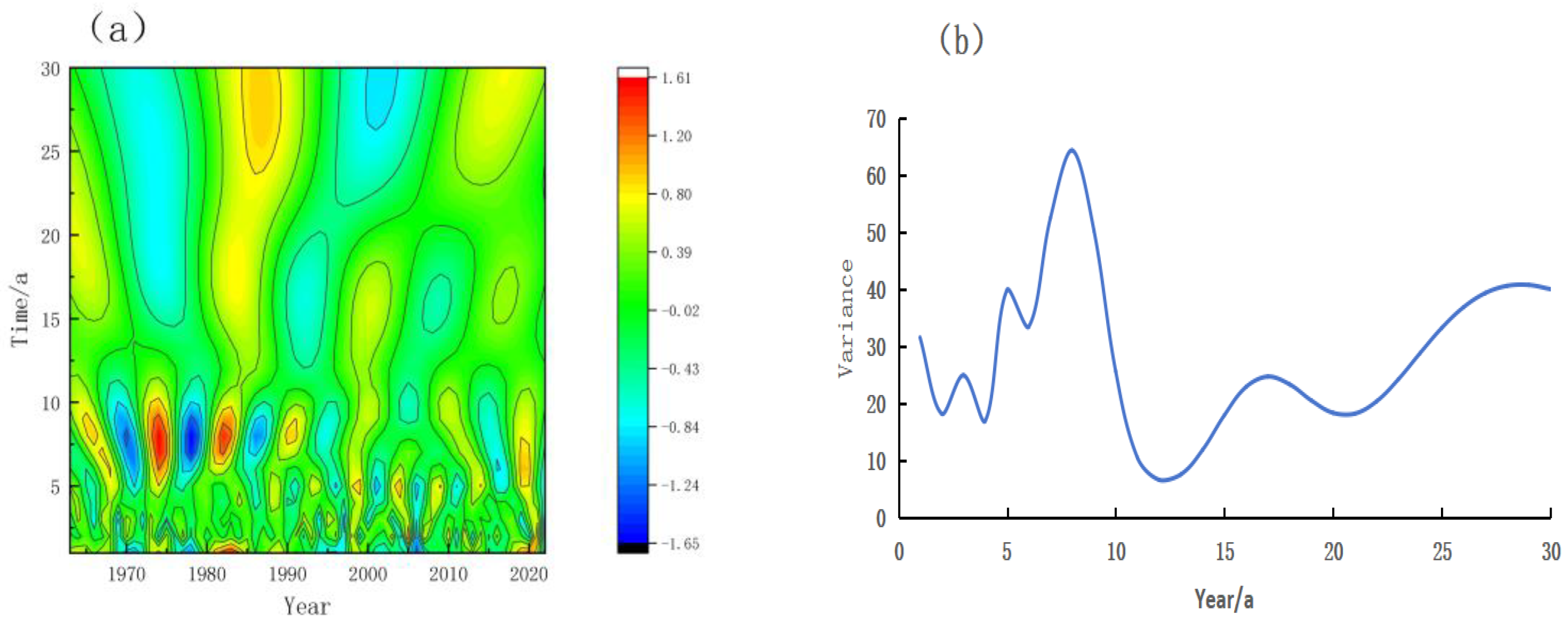

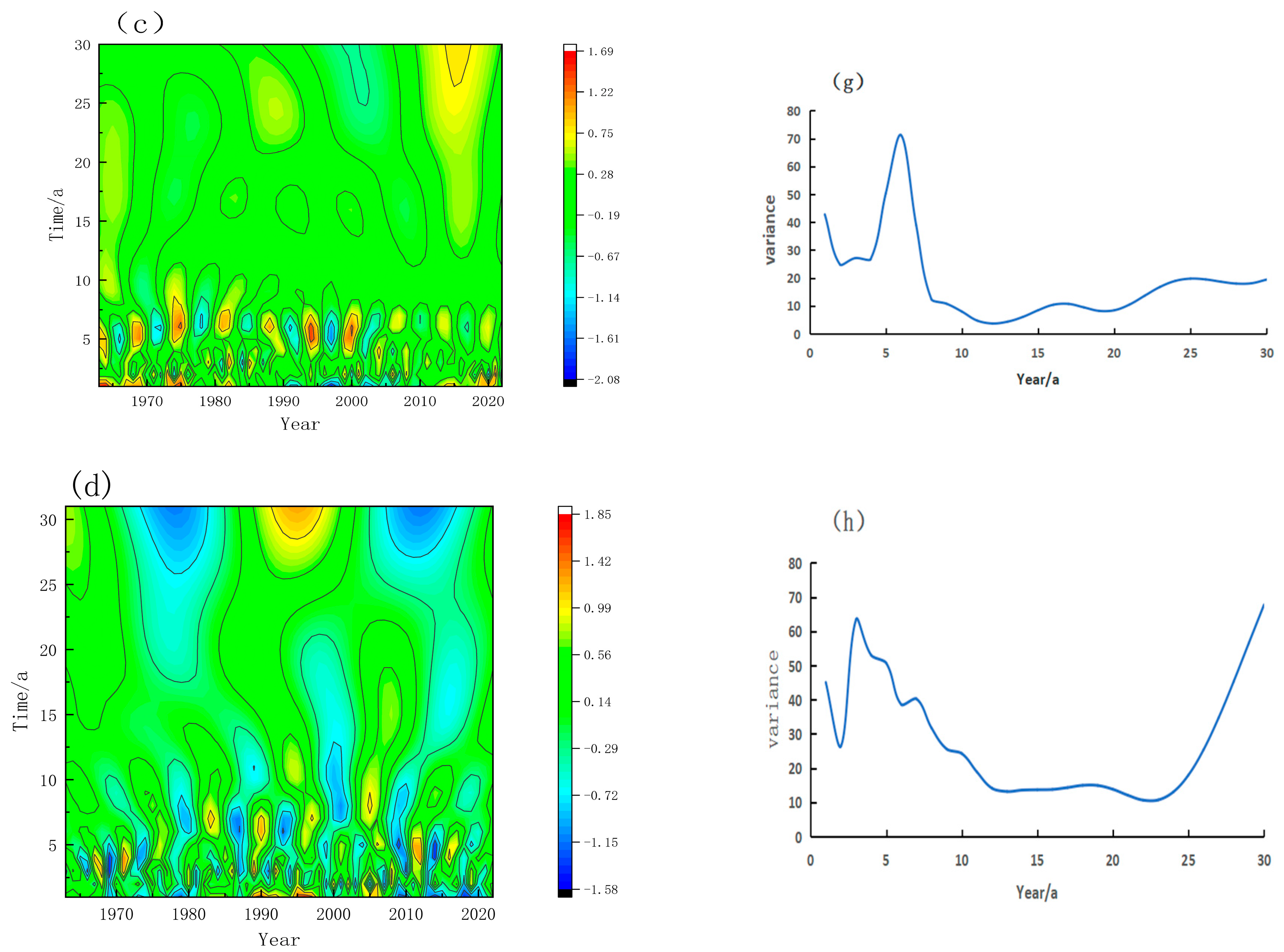
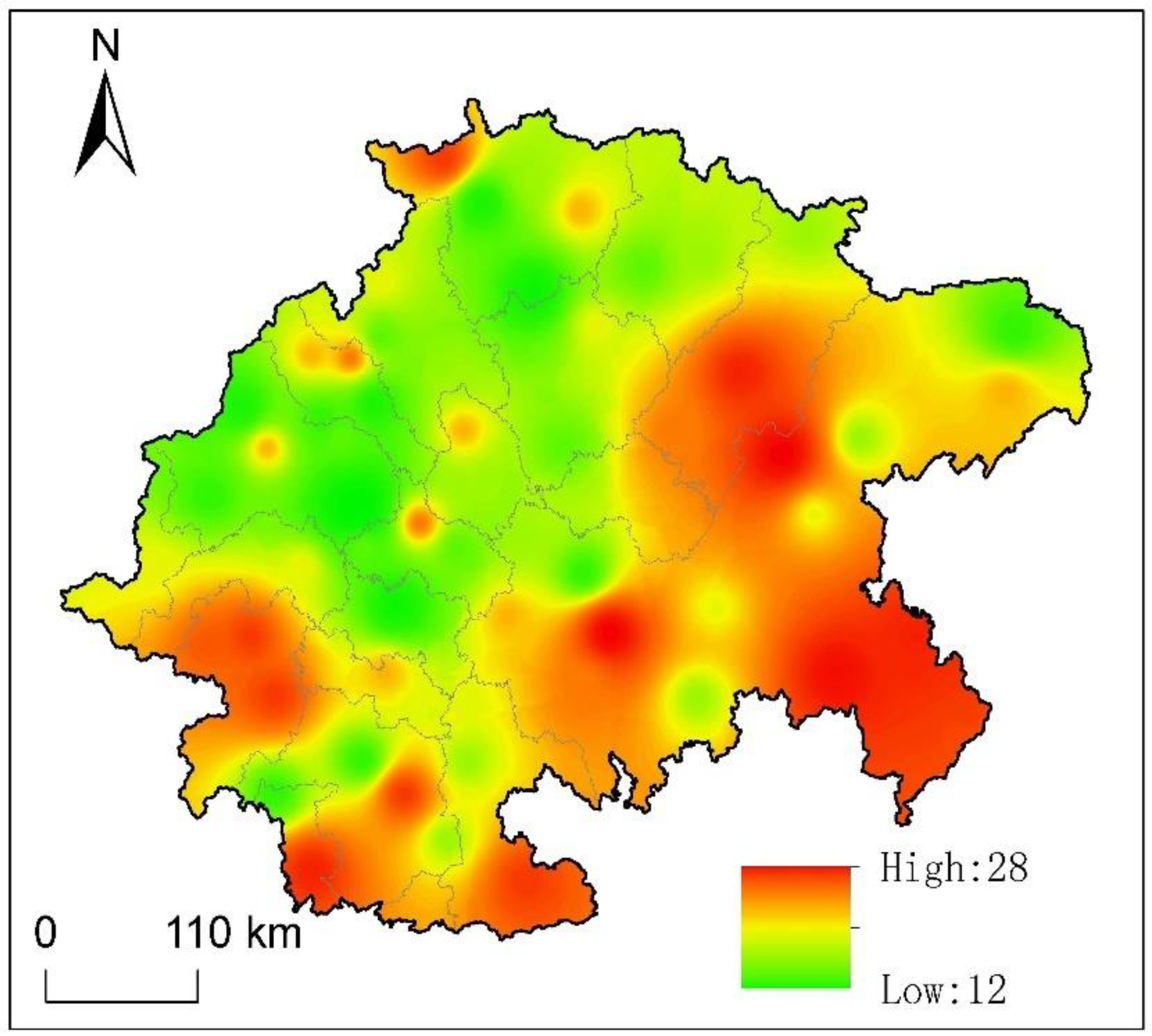

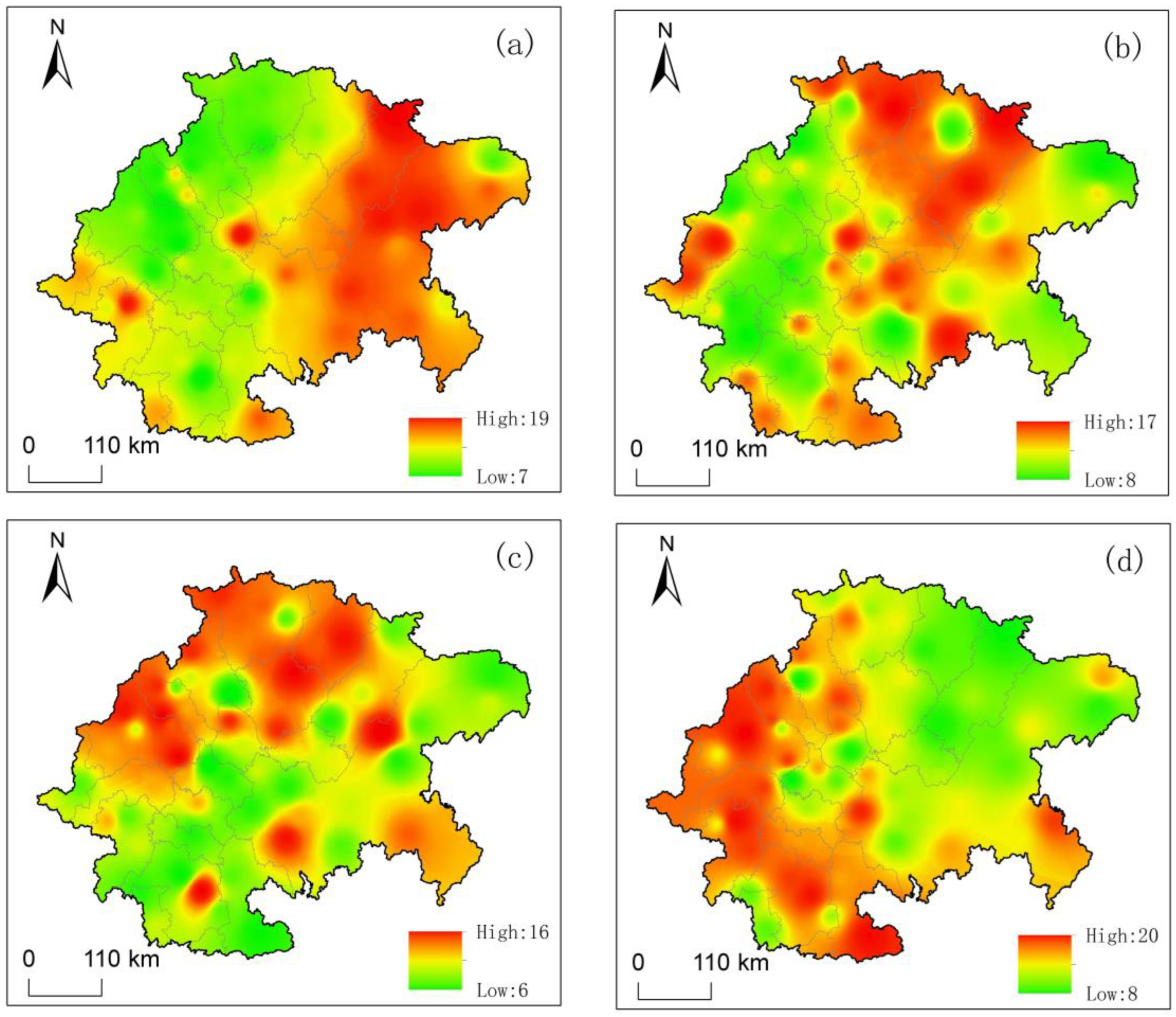
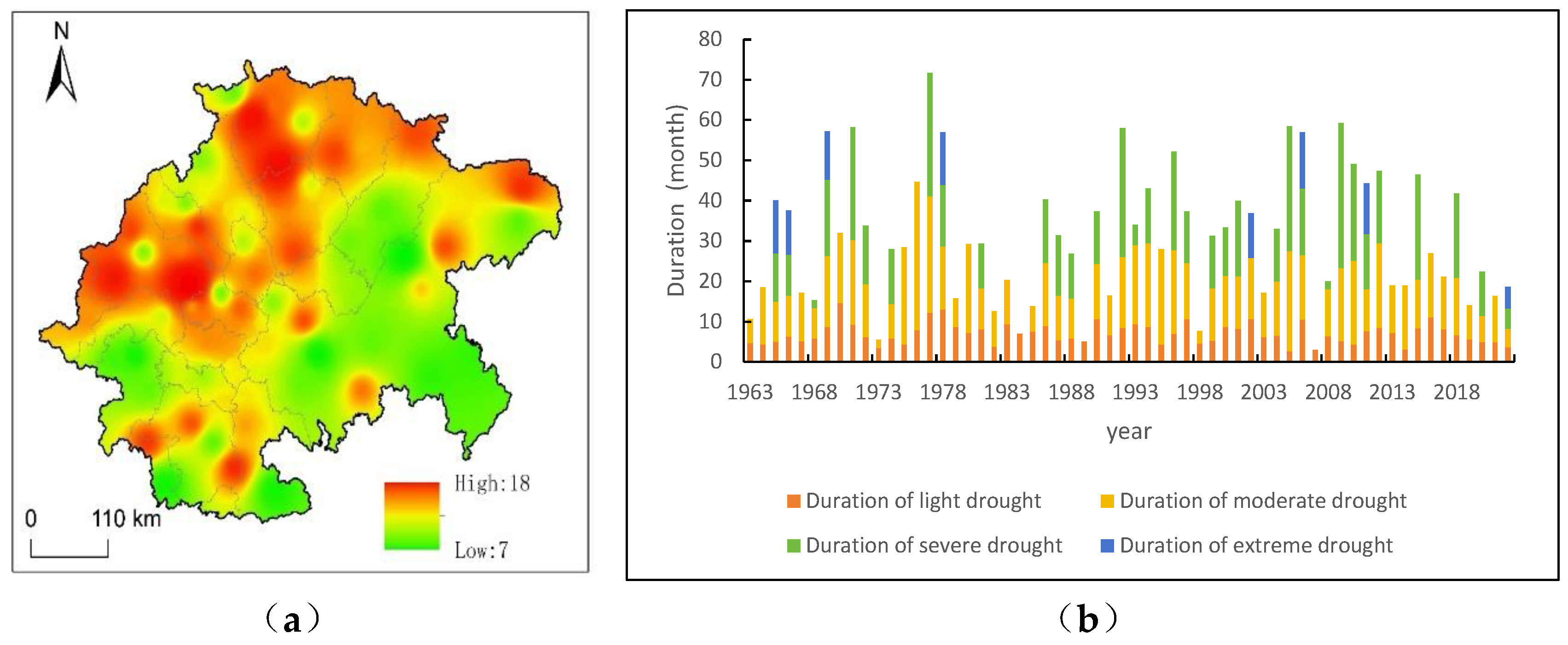
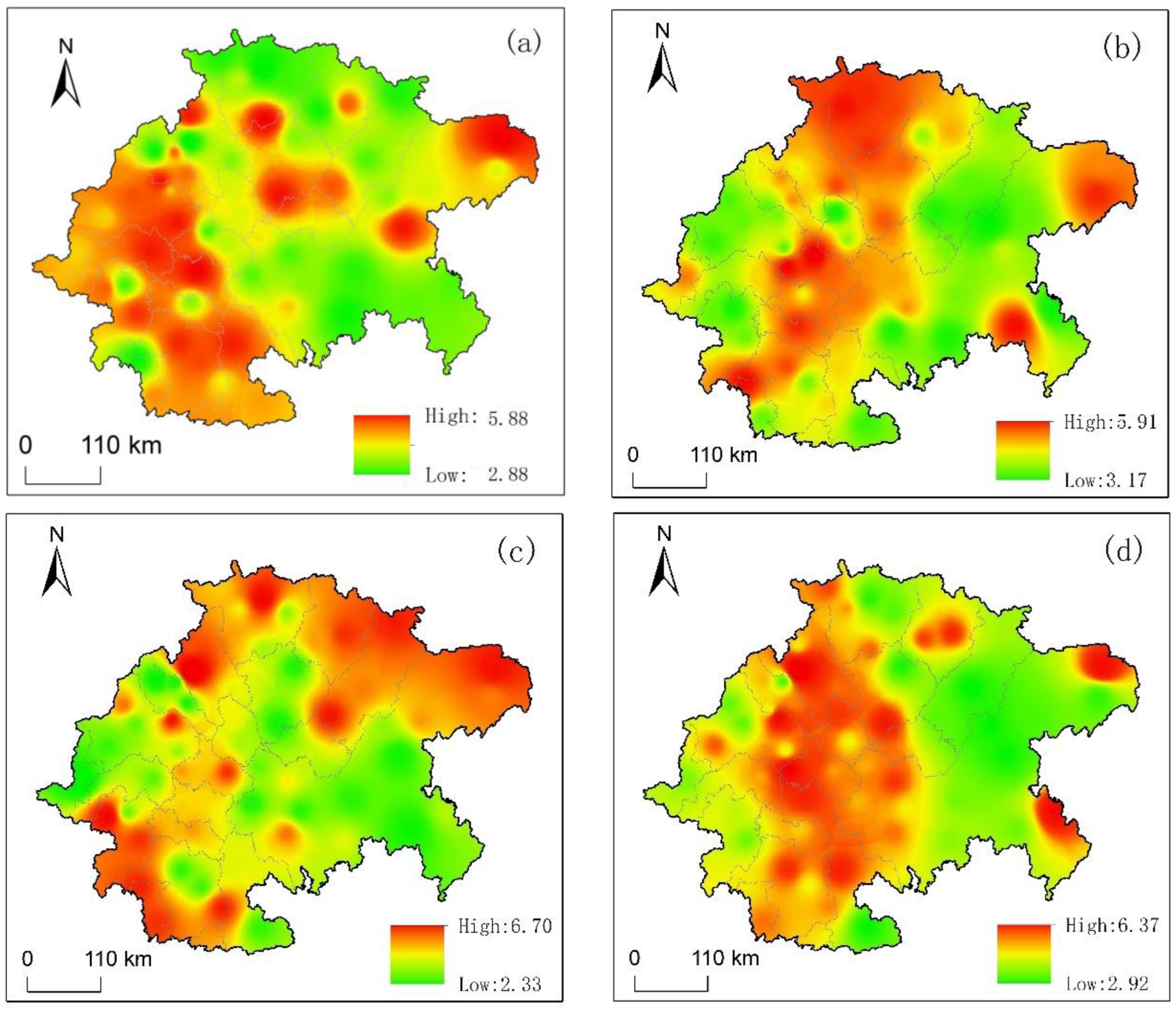

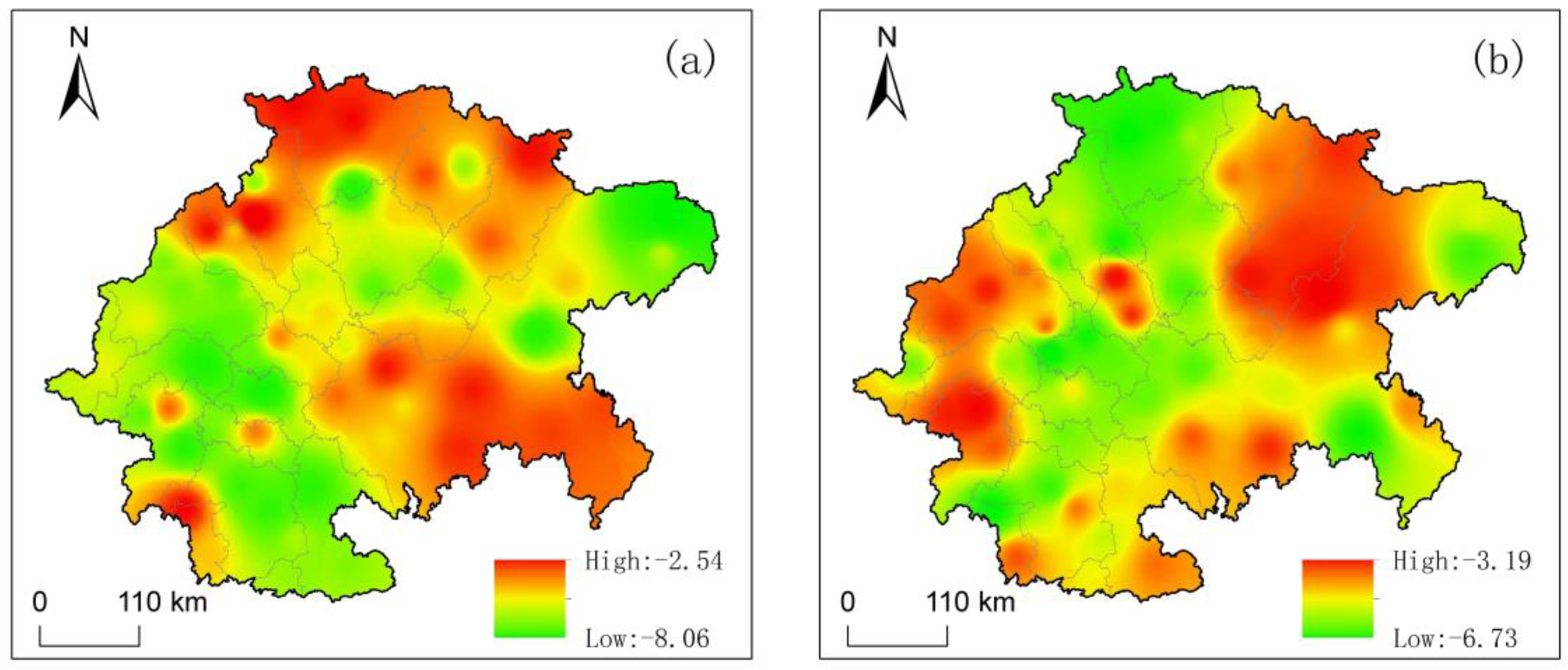
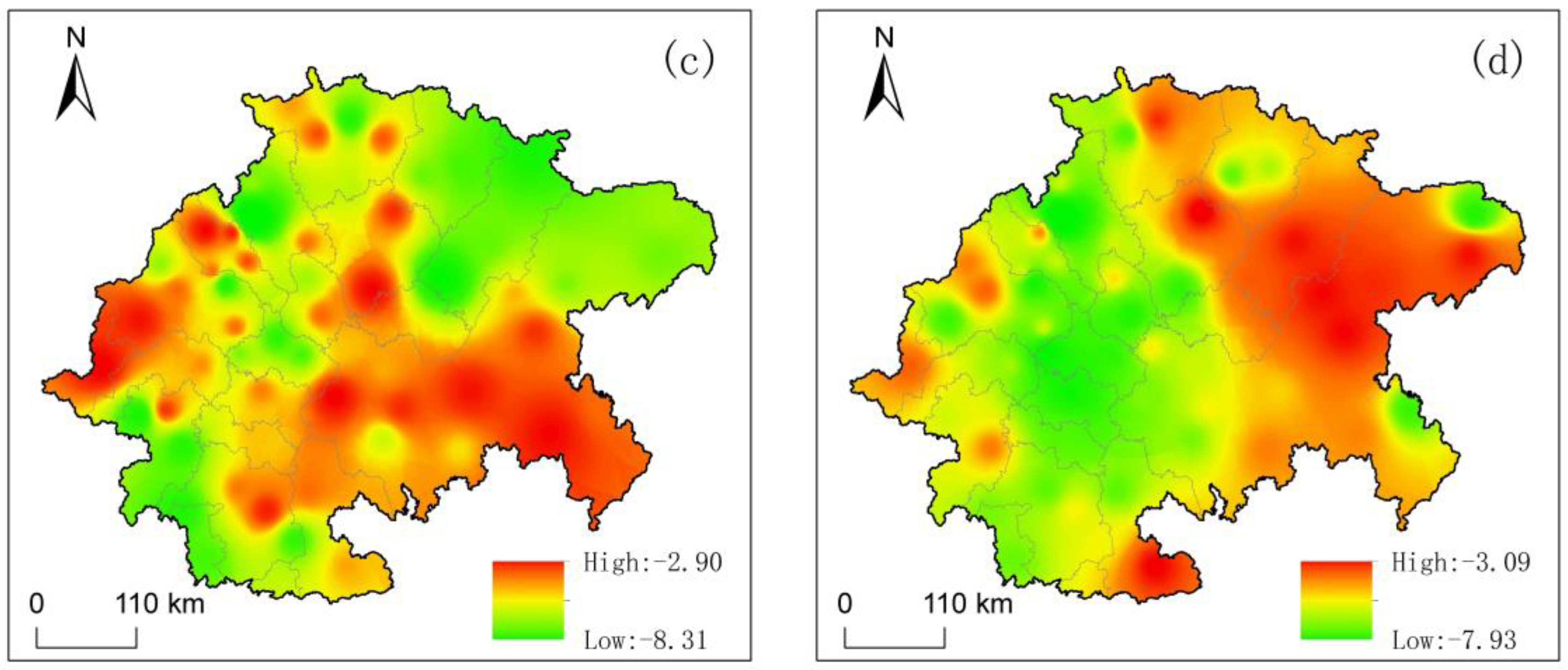
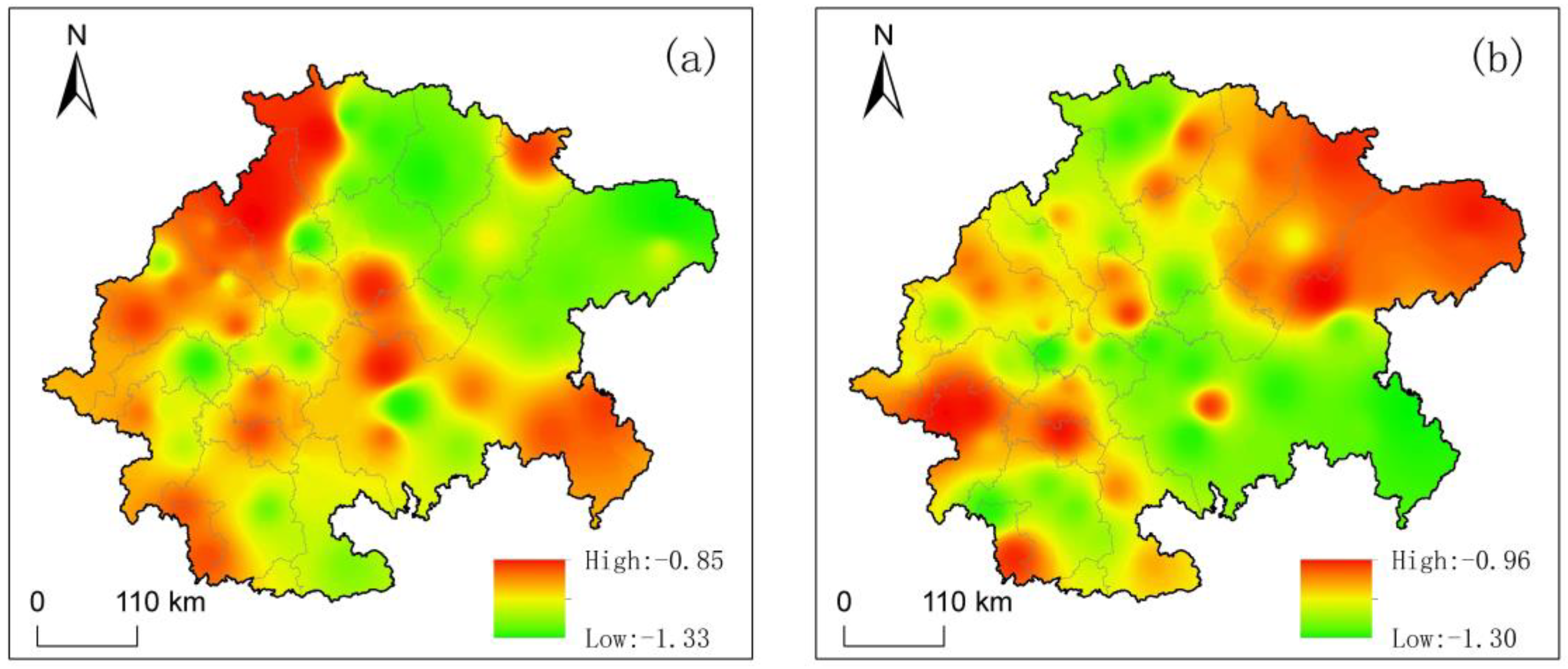

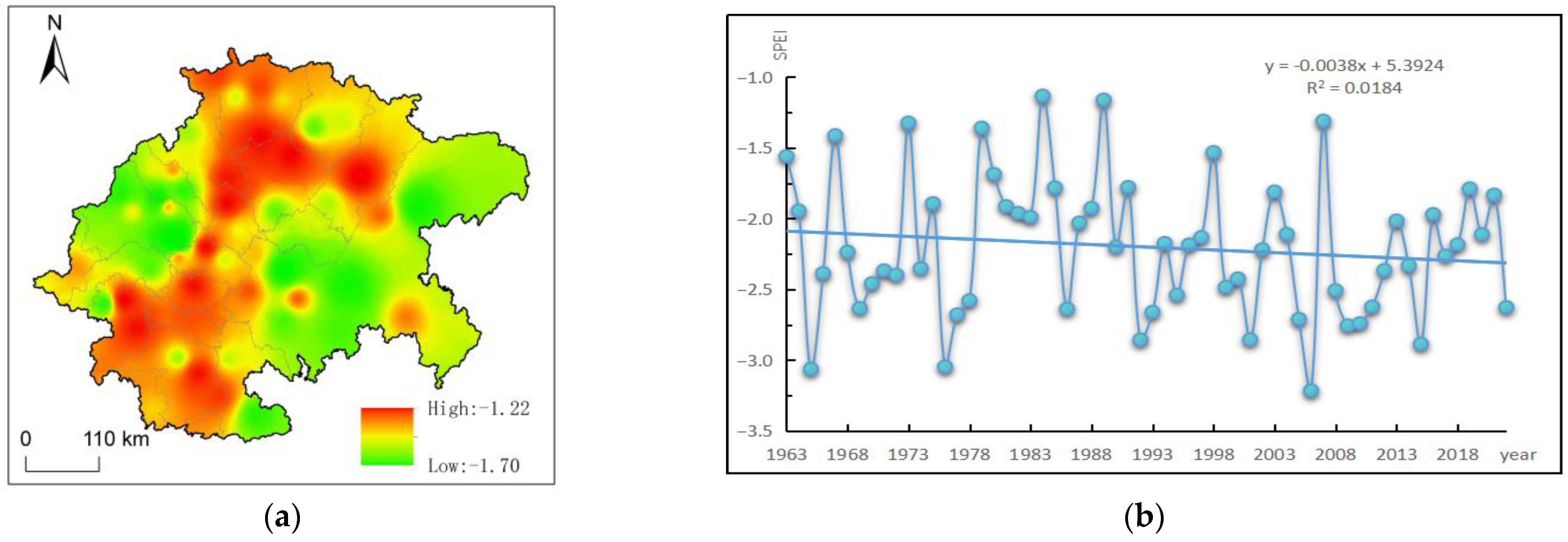
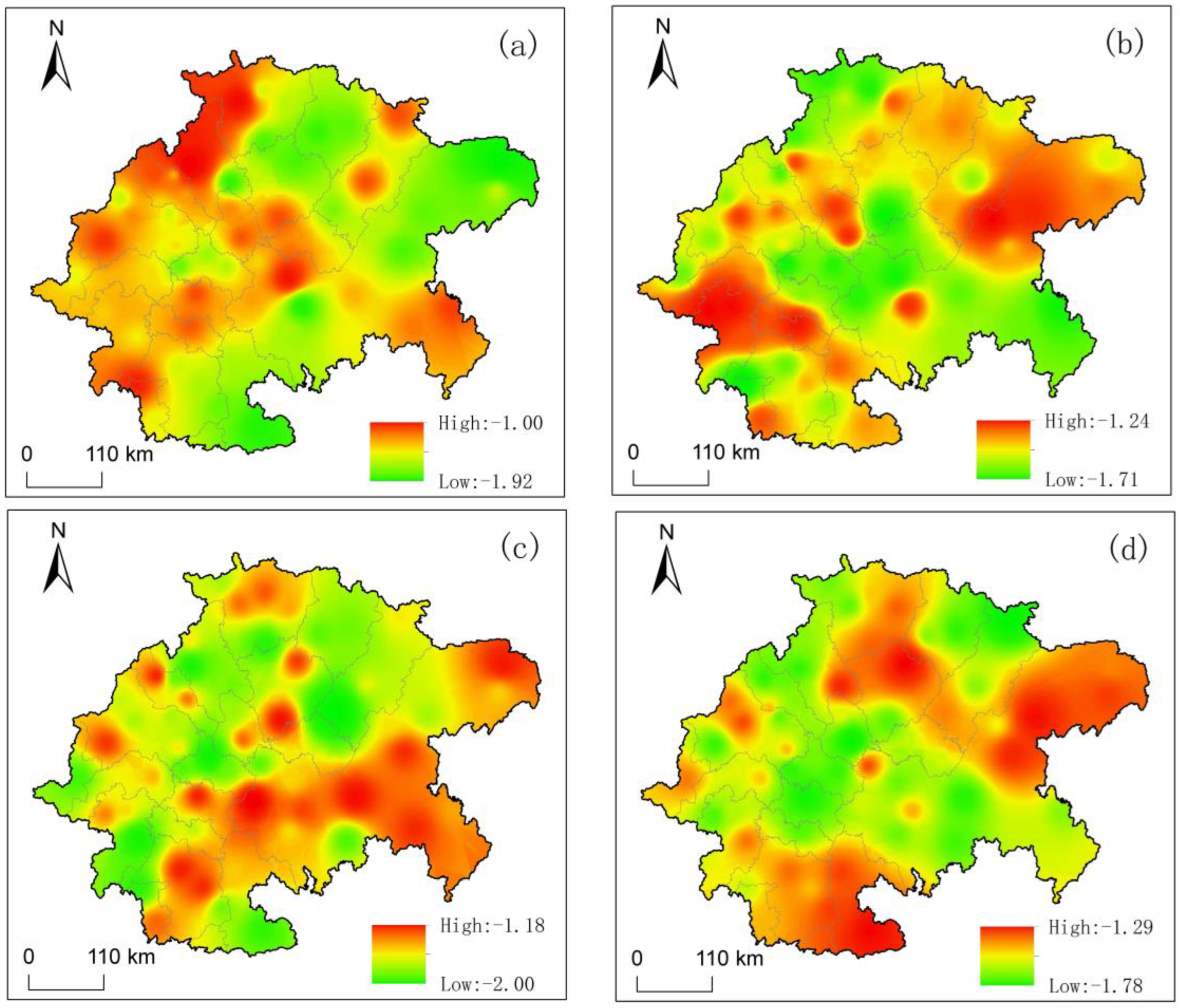
| SPEI Value | Drought Grade |
|---|---|
| SPEI > −0.5 | No drought |
| −1 < SPEI ≤ −0.5 | Light drought |
| −1.5 < SPEI ≤ −1 | Moderate drought |
| −2 < SPEI ≤ −1.5 | Severe drought |
| SPEI ≤ −2 | Extreme drought |
Disclaimer/Publisher’s Note: The statements, opinions and data contained in all publications are solely those of the individual author(s) and contributor(s) and not of MDPI and/or the editor(s). MDPI and/or the editor(s) disclaim responsibility for any injury to people or property resulting from any ideas, methods, instructions or products referred to in the content. |
© 2024 by the authors. Licensee MDPI, Basel, Switzerland. This article is an open access article distributed under the terms and conditions of the Creative Commons Attribution (CC BY) license (https://creativecommons.org/licenses/by/4.0/).
Share and Cite
Yang, Z.; Zhang, B.; Chen, J.; Hou, Y.; Wu, Y.; Xie, H. Characteristics of Spatial and Temporal Variation in Drought in the Sichuan Basin from 1963 to 2022. Sustainability 2024, 16, 8397. https://doi.org/10.3390/su16198397
Yang Z, Zhang B, Chen J, Hou Y, Wu Y, Xie H. Characteristics of Spatial and Temporal Variation in Drought in the Sichuan Basin from 1963 to 2022. Sustainability. 2024; 16(19):8397. https://doi.org/10.3390/su16198397
Chicago/Turabian StyleYang, Zongying, Bo Zhang, Jie Chen, Yule Hou, Yan Wu, and Hong Xie. 2024. "Characteristics of Spatial and Temporal Variation in Drought in the Sichuan Basin from 1963 to 2022" Sustainability 16, no. 19: 8397. https://doi.org/10.3390/su16198397






